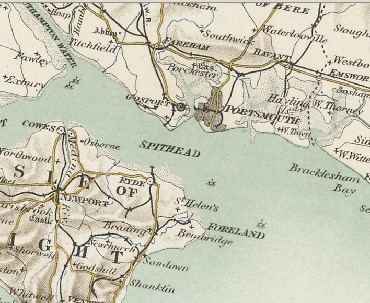Mines at Spithead 1906
20 October 1906
The presence of a number of live “mines” in the waters of the Solent, is the cause, if we are to believe our newspaper, of considerable consternation in shipping circles.
The mines, according to the Admiralty official “warning,” which is posted up at all the coastguard stations on the coast, are believed to have broken adrift in the course of some experiments carried out near the Dean Elbow Buoy at the beginning of this month.

Contact Mine WW1
Having been unable to recover the whole of them, the authorities conjecture that eight of the mines have broken from their moorings, but it is difficult to see how they can be pronounced a serious menace to shipping, for each cylinder is attached to a “sinker” some hundredweights in weight. The reserve of buoyancy, however, is considerable, and it is conceivable that the majority of the missing explosives will be washed ashore, though it is improbable that the reward offered will come to the Island, the set of the tides and the prevailing winds tending to direct their course towards the Sussex Coast
** Were these mines ever found, or are they still floating around somewhere in the world? **
Notes:
Spithead, roadstead, at the entrance of Portsmouth harbour, Hants, extending 2 miles NW. and SE. along the SW. side of the Spit Sand, with an average breadth of 1½ mile; its natural advantages for safe anchorage, and its vicinity to the great naval establishments of Portsmouth, have made it a favourite rendezvous of the British fleet, and the system of fortifications intended for the defence of Portsmouth harbour and dockyards is also designed as a protection for the roadstead at Spithead, a term which is often applied, in a more extended sense, to the whole of the channel which separates the NE.
Sources: IW Observer & Vision of Britain Through Time
Image: Imperial War Museum
Article: Ann Barrett

